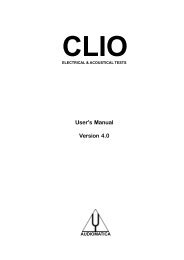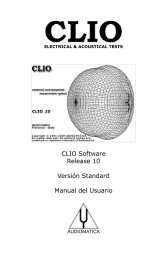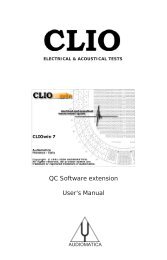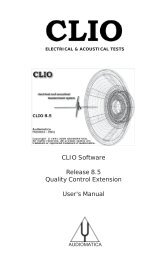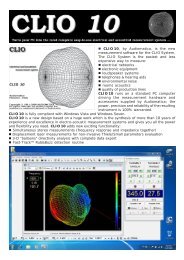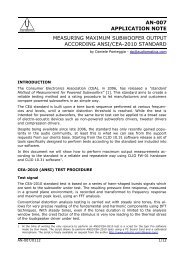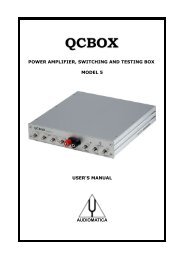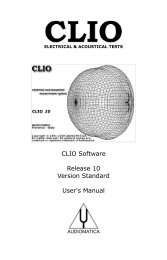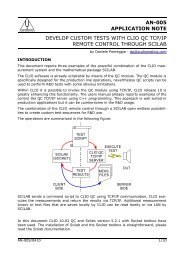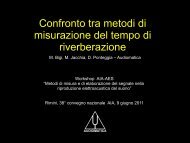CLIOwin 7 PCI User's Manual - Audiomatica
CLIOwin 7 PCI User's Manual - Audiomatica
CLIOwin 7 PCI User's Manual - Audiomatica
You also want an ePaper? Increase the reach of your titles
YUMPU automatically turns print PDFs into web optimized ePapers that Google loves.
etween true phase, as in Fig.10.22, and minimum phase. It is exactly what we need<br />
to separate the time of flight from the devices own phase response. We won’t use<br />
excess phase directly here but a post process of it, Excess Group Delay. Fig.10.25<br />
is the excess group delay of our tweeter vs. frequency.<br />
110.0<br />
CLIO<br />
7.50<br />
dBSPL<br />
ms<br />
100.0 6.00<br />
90.0 4.50<br />
80.0 3.00<br />
70.0 1.50<br />
60.0 0.00<br />
20 100 1k Hz<br />
10k 20k<br />
Figure 10.25<br />
It was obtained by selecting Excess in Drop Down Menu. This graph represents the<br />
distance of the sound source from the microphone vs. frequency. As long as the distance<br />
is constant the system is minimum phase and we are in the position of a well defined<br />
acoustic centre. If you recall from previous paragraphs we have reliable data down to<br />
200Hz because of the time windows. As we deal with a tweeter we will consider the<br />
2k-20k frequency range where the marker reads a constant 2.01ms. We will use this<br />
value to operate a time shift that removes the sound flight time. This is accomplished<br />
from the Processing Tools Dialog, selecting Time shift and typing the value we found<br />
as in Fig.10.26.<br />
Figure 10.26<br />
Clicking OK we can finally display the processed phase, minimum phase and magnitude<br />
response of our device in Fig.10.27. We used the term "processed phase" here and this<br />
is not casual.<br />
122 Chapter 10 - MLS



